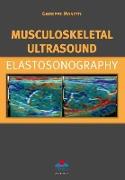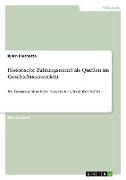- Start
- Musculoskeletal Ultrasound Elastosonography
Musculoskeletal Ultrasound Elastosonography
Angebote / Angebote:
Preface Elastosonography is an ultrasound (US)-based method of recent acquisition that aims to discriminate the different degree of elasticity proper of soft tissues. This method, introduced for the first time in 1991, allows viewing in real-time, via a window of color image superimposed on B-mode to the elastogramme of reference, the different degree of refraction suffered by the ultrasound beam, as a result of progressive pressure exerted by the operator with the transducer on the structures in question. Several studies have already demonstrated the reliability of magnetic resonance elastography applied to the study of muscle response in relation to the type of contraction. This because the MRI (Magnetic Resonance Imaging) signal is strongly correlated to the histochemical composition of tissues, based on the different proton density of the various muscle components. In relation to the different distribution of muscle fiber type within the muscle-tendon structure, we can get different signals on T1 and T2, characteristic of the functional state of the structure under examination. However it should be remembered that the MRI, while allowing for considerable panoramic views of the structures examined, remains always a static test that does not allow a real-time visualization of the components in musculoskeletal examination. The U.S. is universally recognized as a method of first instance in the study of muscles and tendons, but is known that one of the most critical problem of standard US is the qualitative assessment of muscle-tendon structures examined, both in physiological conditions and in the prognosis of muscle injuries where, when the healing has taken place, there is a need to establish the best time of return to activity. Indeed, it is not always possible to obtain information discriminating about the tissue structures since, a structure apparently healthy, often does not match with corresponding functional integrity. Our elastosonographic study applied to the musculoskeletal apparatus is started from a purely functional assessment, based on knowledge of muscle physiology and biomechanics. In accordance with these principles, by giving as established that the maximum elastic coefficient developed by a muscle is detected during contraction, thanks to its self-regulatory bio-mechanisms, the interpretation of the colorimetric map has allowed us to confirm the expectations that the colors indicative of greater intrinsic elasticity, are more evident in dynamic conditions and even more under a load in standing for what concerns the lower limb. The ultrasound examination is universally recognized first level of examination in the study of the musculoskeletal system, mainly due to the dynamic assessment of muscle components. We believe that the ability to appreciate the degree of elasticity, is a further completion of the US study, also in terms of pre-assessment at the beginning of any athletic program, allowing the athlete to athlete trainings, in order to avoid the risk of trauma that often occur during the recovery phase of the sport, whether it be after a trauma, which stops after the season. The study by elastosonography sets itself as a valuable support in the follow-up clinical treatment of muscle damage, allowing a more accurate assessment of functional recovery in relation to the real condition of muscle fibers affected by the repair processe. We believe that this book will be helpful for all medical operators who wish to deepen their knowledge in a subject, diagnostic imaging, which in recent years has seen aconsiderable increase of its diagnostic potential due to technological progress, today thus giving access to more complete and sophisticated equipment, so that deserve aconstantly updated by all users in the health sector.
Folgt in ca. 15 Arbeitstagen





